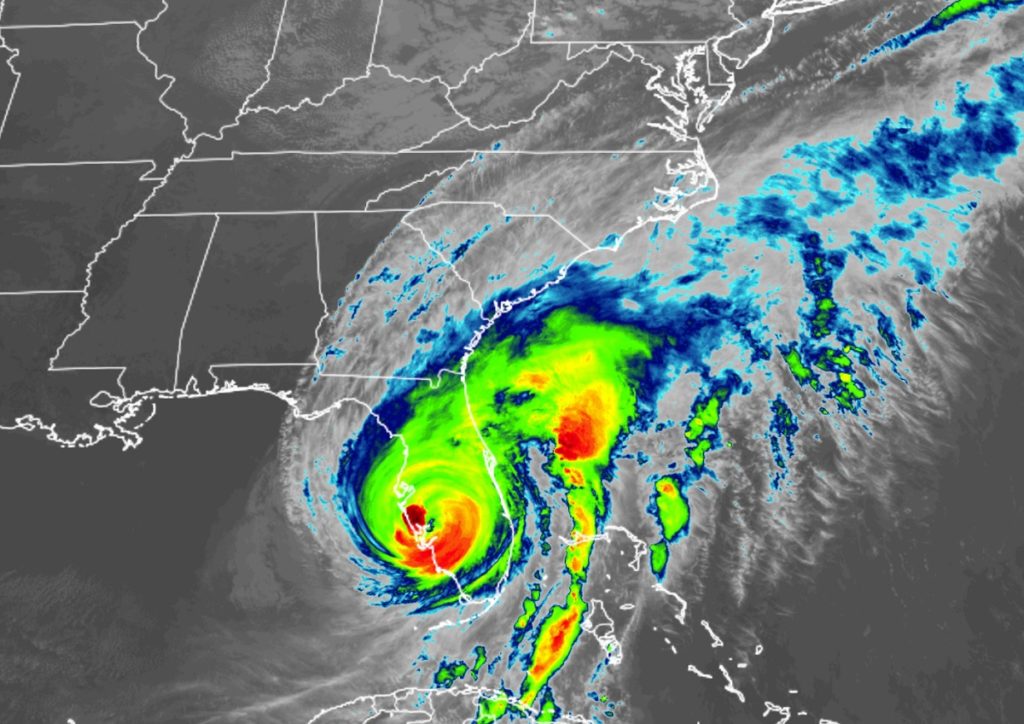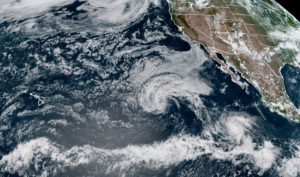
Today, November 30, marks the last day of hurricane season for both the Atlantic and Central Pacific Hurricane Basins. Each season started on June 1. The Atlantic had a quiet start but a destructive end to its hurricane season while the Central Pacific saw limited activity over the same period.
In total in the Atlantic, this hurricane season produced 14 named storms (winds of 39 mph or greater), of which eight became hurricanes (winds of 74 mph or greater) and two intensified to major hurricanes with winds reaching 111 mph or greater. An average hurricane season has 14 named storms, seven hurricanes and three major hurricanes.
In the Central Pacific, there was only one tropical cyclone that moved into the Central Pacific Hurricane Center’s area of responsibility, which extends from
140°W to the International Date Line north of the equator. While four to five tropical cyclones occur during an average year, Hurricane Darby was the only tropical cyclone of the season in the Central Pacific. Darby moved into the basin on July 14 as a Category 2 hurricane, weakened to a tropical storm on July 15, then dissipated south of Hawaiʻi on July 17.
The 2022 season saw three hurricane landfalls along the coast of the U.S. mainland. Hurricane Ian made landfall first as a Category 4 storm in Cayo Costa, Florida, and again as a Category 1 in Georgetown, South Carolina. As a Category 4 with 150 mph maximum sustained winds, Hurricane Ian tied for the fifth-strongest hurricane ever to make landfall in the U.S. Hurricane Nicole made landfall as a Category 1 in north Hutchinson Island, Florida. Hurricane Fiona made landfall outside of the mainland U.S. as a Category 1 near Punta Tocon, Puerto Rico.
“I commend NOAA’s dedicated scientists, hurricane hunter pilots and forecasters who worked diligently to help American communities become hurricane resilient and Climate-Ready for the impacts of this hurricane season and the years to come,” said Secretary of Commerce Gina Raimondo.

This unique season was defined by a rare mid-season pause in storms that scientists preliminarily believe was caused by increased wind shear and suppressed atmospheric moisture high over the Atlantic Ocean. After a quiet period in August, activity ramped up in September with seven named storms, including the two major hurricanes — Fiona and Ian — seen this season. The season also included a rare late-season storm with Hurricane Nicole making landfall on November 10 along the east coast of Florida.
“Forecasters at NOAA’s National Weather Service and its National Hurricane Center issued earlier forecasts with increasing accuracy this season,” said NOAA Administrator Rick Spinrad, Ph.D. “These improved forecasts coupled with critical NOAA data and services undoubtedly led to the better protection of life and property.”
While Hawaii was spared any direct hits due to the relatively quiet season, moisture from former Tropical Cyclone Bonnie did make a substantial impact. Bonnie, which had dissipated in the East Pacific earlier in the month, moved across the state on July 12-13. Several rainfall totals of 1-4″ were observed along the windward slopes of the islands, with an event maximum of over 6″ occurring over the West Maui Mountains.
The 2023 Hurricane Season for both seasons will resume on June 1,2023. While no tropical cyclones are in the forecast, they do form from time to time during the off-season months. If any do form, the Central Pacific Hurricane Center and National Hurricane Center will swing back into action to keep people informed of any hazards any such out-of-season system may create.